Monster Hunter has been around for 17 years, its first releases being on 2004. When a series becomes this storied, with multiple distinct generations and iterations it’s sometimes difficult to reach a consensus on where it has peaked and where it’s headed. There’s often a specific entry or generational period that speaks to an individual, and with a fandom as impassioned as Monster Hunter’s the positions can sometimes be truly entrenched. However, what about the very first entry, Monster Hunter, for PlayStation 2? This is one of those games where people continually told me “don’t go back that far” or “you would be lost.” My position is usually that I have to see it for myself.

My younger brother has been a fan of the Monster Hunter (MH) series for much longer than I have been. To keep it brief, I was a casual observer until World, and then went back to play some of the previous games. However, I also bought my brother Monster Hunter Tri on a whim because I figured at the very least he could use the controller that came with it. He seemed to take to Tri pretty quickly and would soon seek out Freedom Unite to continue his dive into the series. So he’s the veteran here.
This is relevant in this case because I played through Monster Hunter 1 with him recently as a sort of relay quest. Although lockdown meant progress was slow, when we could get together in the same room we would designate specific quests that we would work on, and split the work. I wish I could have played this online, I’m pretty sure there are some fan sourced ways to play MH1 HR still. But it was more important to me to play MH1 with my brother, first.
Monster Hunter has changed over its nearly two decades of history, for better or worse. But at its core, the stars of the show are the monsters. So how far removed can MH1 be from the rest of the series?
The Monster selection is definitely limited here. Having not played Online, I don’t have any experience with Kirin or Fatalis. The majority of large monsters available in Village are Bird or Flying Wyverns. Three of these Bird Wyverns are the pack monsters Velocidrome, Gendrome, and Iodrome and they have a Deinonychus or Velociraptor inspired body. The other Bird Wyverns Yian Kut-Ku and Gypceros, however, hold themselves like Flying Wyverns (based on traditional fantasy depictions of Wyverns) and share many of the same animations. Yian Kut-Ku can run and stumble forward, and so can Rathalos (to considerably more disastrous effect, ha). Even the handful of Piscine Wyverns, with fish-like inspiration, share some of the same animations and still hold themselves in a similar way. Bird, Flying, or Piscene… chances are they’ll do the half circle tail slap.

This creates the potential for stagnation when there is so much shared design between a small pool of monsters. But each Wyvern has unique elements that help it stand out. Gypceros can blind you with its crest, Monoblos and Diablos dig, Gravios has a devastating beam and its juvenile form Basarios sometimes fizzles out when it tries to fire its own heat beam. Although there are certain similar pairs in the game like Rathalos and Rathian they have their own quirks that separate them and allow the encounters to generally remain meaningful.
Animations and design also define a monster’s personality. Yian Kut-Ku’s short hops and pecks show an eclectic bird. When Basarios charges and skids trying to stop itself you can feel the inertia of its rocky carapace acting on its body. Monoblos is aggressive to the point that it can get its horns stuck in a wall while charging you. These traits carry on through the series, but they are still rooted here and it they help differentiate a roster that largely shares the same bodytype.

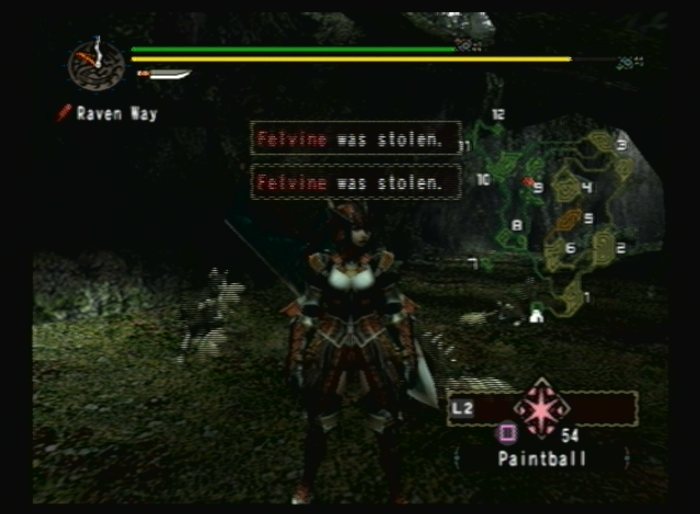

For this playthrough, a lot of new monsters felt like an event. The pace of Monster Hunter 1 is definitely slow. Inventory space, and storage space meant we were reluctant to really stockpile supplies. Is it better to keep things as raw materials or to craft them and store them for later? What saves more space? Or is it worth it to get that crafting out of the way early since the combination rate for crafting is particularly punishing here, even with books in your inventory? There is a lot of planning in MH1, and this is something I actually really like about it. If this game had great deal more large monsters then it would be too much. But at least for the first encounters, it felt like we were really preparing for the unknown even though we’ve fought all of these monsters in later generations.
Fighting a monster during their debut gives a different perspective on them. Basarios lacks a lot of the moves I was used to, but it’s a much more engaged fight. It doesn’t try to run and hide, at least in my experience in the Village, its toxic gas drops vespoids from the sky for some calculated mid battle carving, the backwards walking tail whip eats through health surprisingly fast. Gypceros is enhanced by being in the Swamp, its poison speweing run attack carrying the beast out of the fog which gives even a fight with a rubber chicken a surprisng level of atmosphere. Cephadrome has the… cool trait of never wanting to come near you and wasting a lot of time.
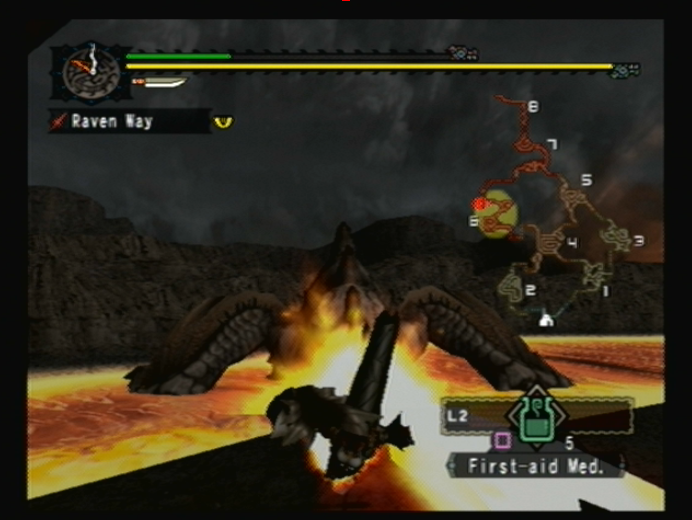
Rathalos, the series flagship, also loves to waste time. He’ll fly in the air and circle the zone before diving you. Relocate areas and then quickly leave again. Chain together its instant charges. Favour areas that are narrow and are prone to messing with the camera. But it circles back around into hunt prep, the Hunt Rathalos quest signaled that we really needed to start using more tools and become proficient with them. It doesn’t mitigate it all, there’s still plenty of ludicrous scenarios possible, but it helps.

On the subject of combat, the most maligned aspect of MH1 is almost certainly that attacks are mapped to the Right Analog Stick. This isn’t actually the real problem here, the weapons are simple and deliberate enough that you soon get used to it. Our character in this playthrough mostly used Great Sword and it felt natural enough, without the charge attacks introduced in second generation you get used to stringing together combos with the weapon with enough spatial awareness to hit monsters even if they’re moving out of the way. However, this is by no means a better option than using the face buttons especially as weapons evolved and became more complex.
The real problem with using the Right Analog Stick as the attack input is that the camera controls are on the D-Pad. It is difficult to move with the left stick, adjust the camera with the D-Pad and attack with the right stick. I found myself using L1 to snap the camera behind my character’s back much more often but there are times you want to make fine adjustments. But the camera in general is often really bad in this game, getting stuck on the terrain and sometimes becoming a liability next to walls in general.

What Monster Hunter 1 absolutely nails is atmosphere. These maps are all very well realized, lots of small details to find, some pretty locations, and some very cool environmental effects. Each location feels distinct, but the Swamp was by far my favourite. Dark and moody, a bog steeped in fog and mist. Monsters obscured by the fog push through the shroud, they seem almost ethereal. Pools of water and reeds provide a splash of colour and welcome contrast from the deeper swamp. The roll of thunder in the distance. The solemn caves, their ceilings crawling with roots. It all comes together to make one of my favourite locales in the entire series.
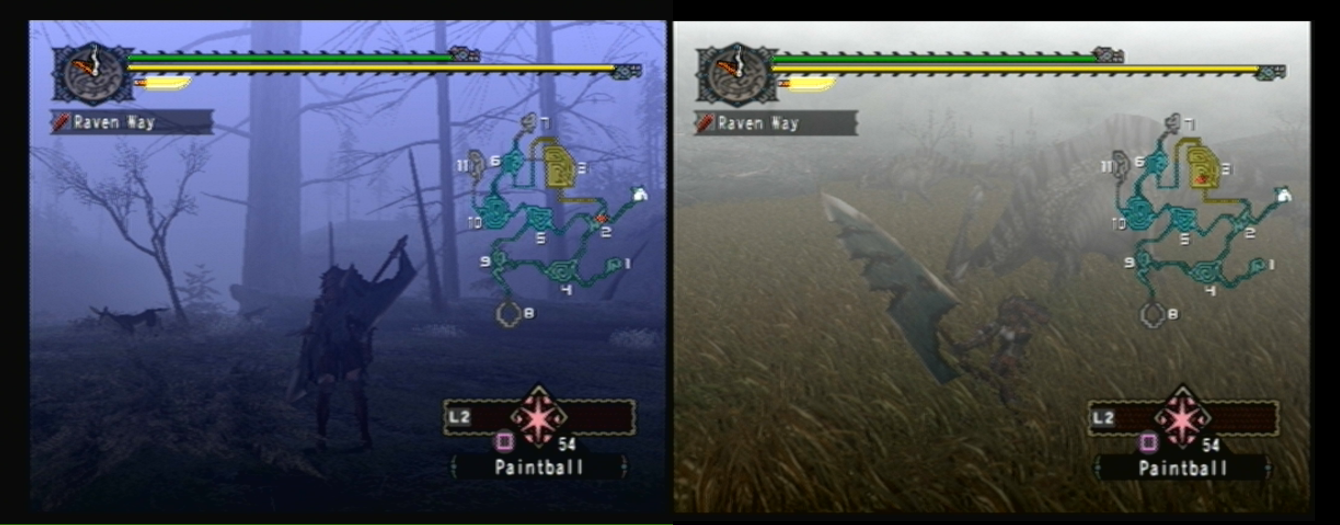

MH1’s world design also extends to gathering. Instead of the distinct nodes more common today many of the gathering spots are part of the environment. A wall of climbable vines? You might collect Ivy at the top. An imperfection in a cliff face? There could be minerals in there. The bones strewn across the floor of Rathalos’ den? You can pick some of them up. There’s something beautifully simplistic and natural about this approach to gathering. But as the roster expands, the pace wants to increase, and the prevalence of farms and trading I can see the benefit of standardized nodes.
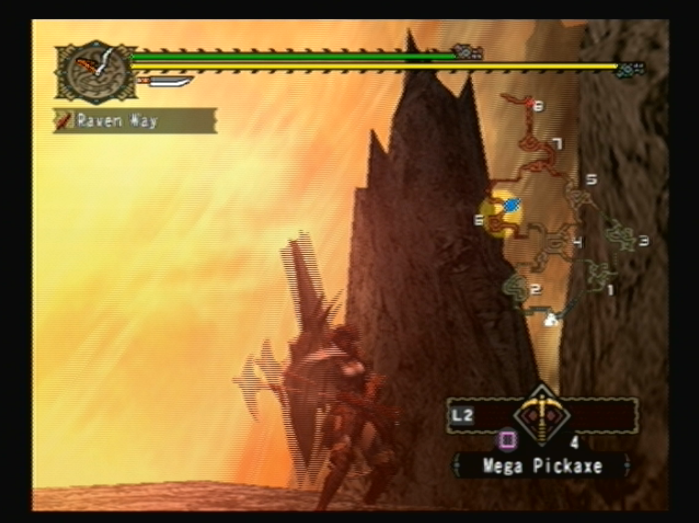
Monster Hunter has issues but it’s not unplayable coming back to it. If you have an understanding of some of the fundamentals of the series then it’s very manageable. There are definitely some dire situations, getting stuck against a wall until you faint. Some aspects are pretty arcane – armour skills are hidden until active, for instance, and can be sourced from seemingly disparate combinations of armour pieces. Or how about the way quest availability cycles in and out? I was unable to get a Rathalos Wing for my helmet until the credits rolled, because I could not repeat Capture: Rathalos until this point. It would not cycle back in. Since I would do gathering and set building in the months while brother was away I tried to get this to cycle in – a lot, ha ha.
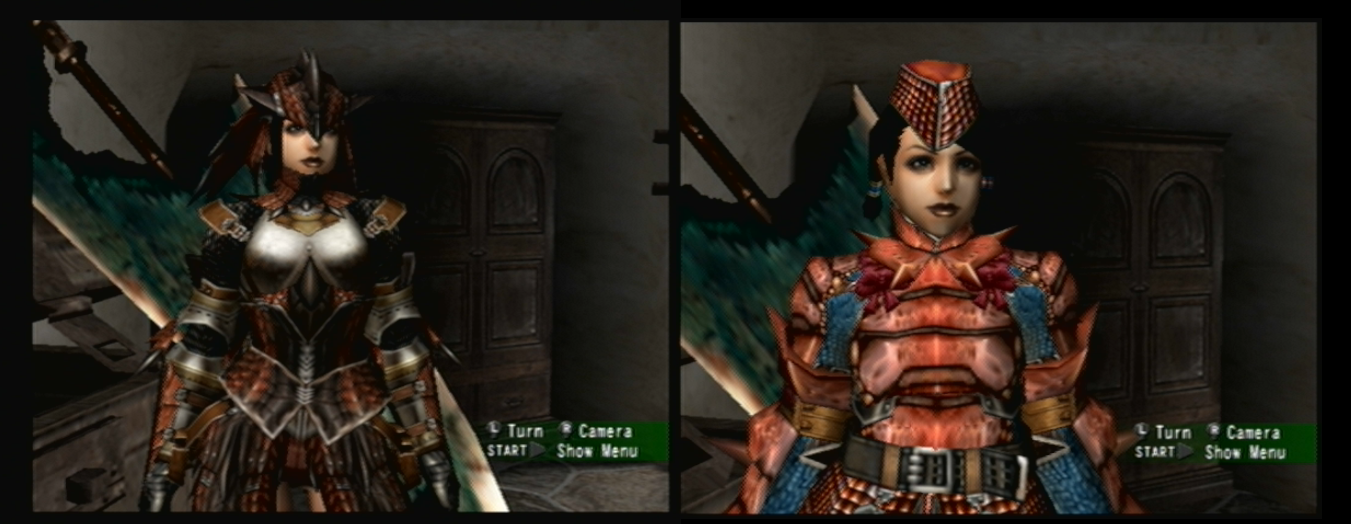
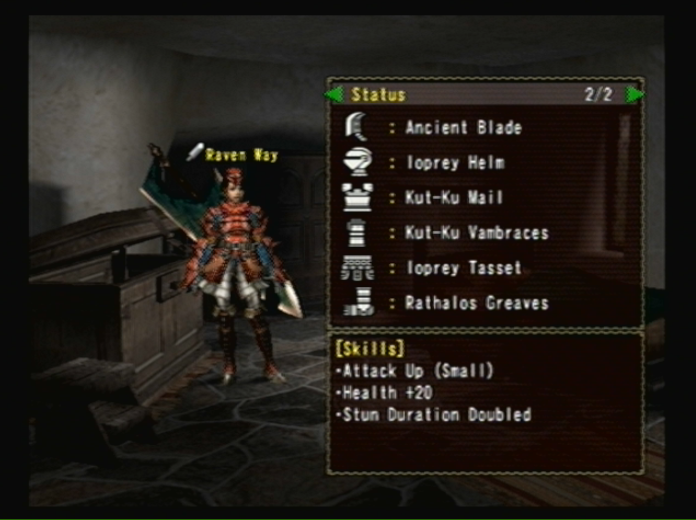
But as far as I can tell there’s no way to know you’re going to get these skills until you get them?
The unorthodox control scheme, the combo potential from monsters, the terrible camera, being locked out of desired quests until you cycle them… it’s not for everyone. I do think that if you have the opportunity to try the first entry of a series you love that you should look into however. There’s a lot of perspective in seeing where something came from, and what its trajectory through to the present means for its future.
It’s not enough for me to just accept a game is bad on hearsay, I have to play it. I went through this a decade ago when I first played NieR Gestalt, I wanted to play Drakengard and the chorus I was met with was that Drakengard is horrible and that I would hate it. And while that game was deeply flawed I still got a lot of value out of it. Now, Monster Hunter is far more playable than Drakengard, but it’s a similar situation. I can see and accept all of the rough edges and moments but still come out of it saying I had a lot of fun.
Part of that definitely has to do with the circumstances in which I played it, as a collaborative effort with my little brother there’s absolutely going to be more at play here. But I still wish that I would have first played this in 2004 where it was at its most mysterious and the online was getting off the ground. Issues aside there are still a lot of elements that would have appealed to me even without the predisposition of being a fan of the series. I’d love to play through Dos as well, if there’s translation available.
This playthrough had its ups and downs, and we still technically have a couple of secret Village quests left. But it was punctuated by moments that are going to stick with me, and it’s only made me hungrier.

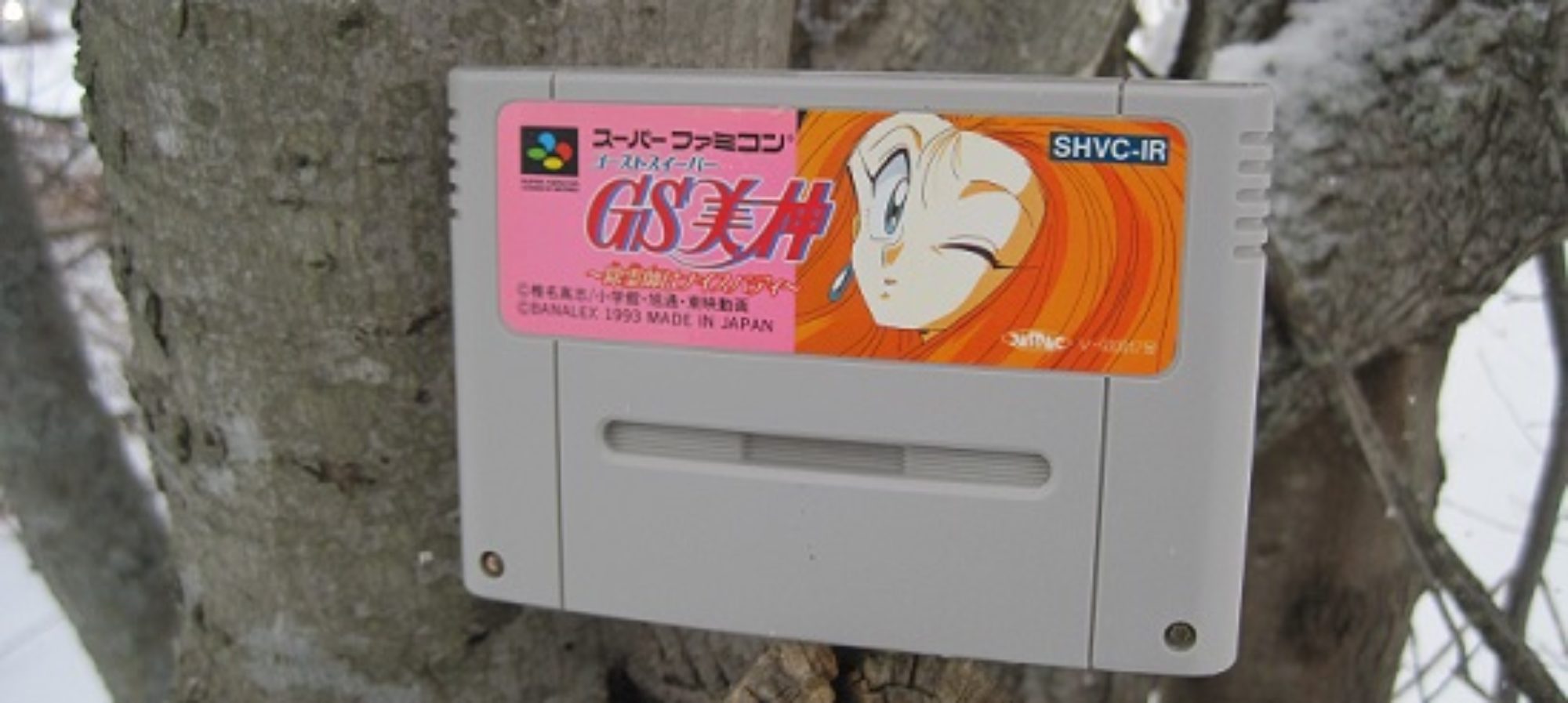
You know how much I love Monster Hunter, so I’m not going to gush about it here.
Seriously though, it makes sense that you would want to try the first one if you loved the others. Especially since you’re a lot more receptive to qualities that can turn a lot of others off. The Swamp area does look nice.
And crafting in games? I usually hate it, lol. I just hate grinding for drops in any game in general. Archaic and horrible game system.
No worries, I know it’s not your thing.
The grind is definitely a carrot-on-stick mechanic but that kind of thing depends on the individual. I don’t mind it because my personal gameplay is improving every time, or because I’m playing with friends or family.
I still like reading through your perspectives on games/series I don’t like or care for, to be honest.
You still have the second on PS2 and all three PSP ones to go through yet… ha ha!
Yeah, playing it multi with someone you know well does make games funner for most, I would say. Local is probably better if it’s full screen.
I have a lot to go through, yeah. I’ll have to use a translation patch for some of them though, so we’ll see how that works out eventually.
Well, most of the stuff I get the motivation to write about is relatively niche (aside from this) so that’s good I guess lol.